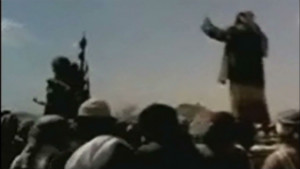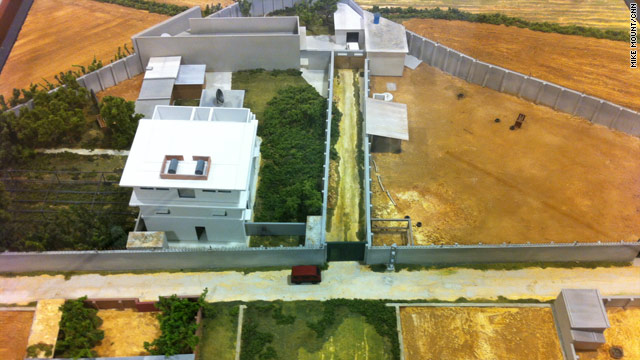By Joe Sterling
Inspectors found a high level of enriched uranium in Iran, a U.N.
report said Friday, as world powers attempt to work to stop the
country from developing the capacity for nuclear weapons.
The U.N.'s International Atomic Energy Agency asked Iran this month
to explain the presence of particles of enrichment levels of up to 27%,
found in an analysis of environmental samples taken in February at the
Fordo fuel enrichment plant near the city of Qom.
The previous highest level had been 20%, typically used for hospital
isotopes and research reactors, but is also seen as a shortcut toward
the 90% enrichment required to build nuclear weapons.
Iran said in response that the production of such particles "above the
target
value" may happen for "technical reasons beyond the operator's
control." The IAEA said it is "assessing Iran's explanation and has
requested further details."
This development comes a day after Iran held nuclear talks in Baghdad with six nations: the
United States, Britain, France, Russia, China and Germany. There had been no breakthrough in discussions.
Iran rejected calls to stop the high enrichment of uranium that can
be used for weapons, while the international powers refused Tehran's
demand for an immediate end to sanctions crippling its economy.
But the nations plan to meet next month in Moscow for another round of talks.
World powers suspect that Iran wants to build nuclear weapons, and
they want to stop the nation from doing so. Iran says its atomic
aspirations are for peaceful purposes.
The talks come at a crucial
time
for Iran. Its economy has been crippled by sanctions imposed by the
United Nations, the United States and the European Union. Because 80% of
Iran's foreign revenues are derived from oil exports, an embargo by the
EU set to go into effect in July will put further pressure on its
economy.
Iran threatened this year to close the Strait of Hormuz, a vital oil
shipping lane, if sanctions were imposed on its exports of crude oil.
Israel, which is believed to have its own nuclear arsenal and is alarmed
over Tehran's hostility toward the Jewish state, has said it may attack
Iran to try to stop the country from developing nuclear weapons.
European Union foreign policy chief Catherine Ashton said
"significant differences remain." But the resolve to continue talks may
signal a change in tone, coming after past negotiations that have been
marred by threats and allegations of foot-dragging and unreasonable
demands.
The world powers made Iran an offer for stopping its processing of
medium-enriched uranium, which can be used to make nuclear weapons, EU
officials said.
The proposal also called for Tehran to prove that its nuclear program
is being used for peaceful purposes as it claims and comply with U.N.
Security Council resolutions, according to a Western official, who spoke
on condition of anonymity because of the sensitivity of the
discussions.
Asked whether relief from the tough Western sanctions imposed on Iran
will be on the table, the same Western official said, "There is no
expectation it will happen as a result of this meeting. Iran would need
to
take significant concrete action first."
Iran's counter-proposal included five areas of nuclear and
non-nuclear cooperation, Iran's state-run Islamic Republic News Agency
reported late Wednesday.
A British Foreign Office spokesman said world powers are offering
support for Iranian economic and agricultural development and the country's civilian nuclear program in exchange for cooperation.
Another idea on the table is an updated version of an offer to swap
enriched uranium for nuclear fuel, EU officials said. There had been a
proposal to swap most of Iran's low-enriched uranium for fuel rods to
power a medical research reactor in Tehran.
Analysts say the change in mood at the negotiating table is positive,
but there are mixed feelings about whether a breakthrough can be
achieved.
Trita Parsi, president of the National Iranian American Council,
commended the participants for returning to talks. He said they "didn't
give up just because they ran in a stumbling block."
"A feasible solution is to match tangible, verifiable Iranian
concessions with a delay of the impending European Union oil embargo,"
Parsi said. "This would add time to the negotiation clock and buy both
sides some breathing space."
Parsi said the Obama administration has mustered political will "to
exhaust all options" before the only choice left is military. He notes
that negotiations between adversaries in other instances have been
painstakingly long, citing the U.S. and Vietnam talks and the
negotiations to end conflict in Northern Ireland.
There will be stalemates and steps forward and backward, he said.
"What happened in Baghdad may have somewhat calculated in the sense
that there was an awareness that there is enough time for an additional
meeting (in Moscow) before European and American sanctions kick in on
July 1," he said.
But David Albright, founder and president of the Institute for
Science and International Security, a group devoted to stopping the
spread of nuclear weapons, said, "the clock is not very friendly at the
moment" with a nervous Israel in the backdrop and a high-stakes
political atmosphere with the Obama administration facing "aggressive
Republicans" in an election year.
"Obama doesn't have years and years," he said. "He has weeks and weeks."
Albright said the Baghdad talks didn't "completely collapse," and the "success of this is that there's another meeting."
But "they need results," he said.
There didn't appear to be the minimal "progress on concrete results"
that the United States wanted, such as creating a forum to begin
discussing an agreement on enrichment levels. Albright said the sides
need to start forging a series of small concessions and incentives
before they go to larger steps.
Matthew Kroenig, a nuclear security expert at the Council on Foreign
Relations, said he believes that "good will" can go only so far and that
"room for compromise" will continue to be difficult. He believes that
making a "military threat more credible" could help pressure Iran.
He said both sides have an incentive to keep talks going and to keep
the impression that the discussions are "fruitful." He said the White
House is afraid that if negotiations break down, Israel "will take
matters into its own hands," and the United States could be dragged into
unwanted war. Iran wants to engage in what are perceived to be a
"fruitful" talks to buy time and avoid Israeli action.
"I'm afraid it's really hard for me to see a diplomatic solution to this," Kroenig said.
Dina Esfandiary, an analyst at the International Institute for
Strategic Studies, called the "willingness to continue talks" and
understand each other's stance "noteworthy."
"Prior Western concessions on location and time were intended to show
their good will, something that has been repeated in choosing Moscow
(more sympathetic to Iran's stance) for next month's talks," she said.
She said the talks helped the sides understand which "concessions were wanted and which were unlikely to be granted."
"Whether the talks accomplished anything depends on the goals: If the
idea was to walk out with an agreement solving the Iranian nuclear
crisis, then no, they haven't accomplished that. But everyone agrees
that that was highly unlikely. If the idea was to continue and
strengthen confidence-building and the negotiations that began a month
ago in Istanbul, then Baghdad was a success," she said.
At present, she said, expectations on each side don't match because
"Iran wants recognition of its right to enrich" which other nations have
only "hinted at accepting only if Iran proves the peaceful nature of
its program first, and this has yet to be resolved."
"Iran is as suspicious of Western intentions as the West is of
Iranian tensions. Neither side feels as though compromising more than
they have already offered to will serve their interests. The real
breakthrough will come when each side feels they have more to gain by
compromise than by standing their ground," she said.
She said the success of the Moscow talks will depend world powers' willingness to accept some form of Iranian enrichment.
"This is something Iran has been categorical about. But Iran will
also have to take steps to prove the peacefulness of its program and
restore what (U.S. Secretary of State) Hillary Clinton has described as
'the confidence of the international community,' to the extent where the
international community would feel comfortable allowing them to
enrich."
One scenario she cited is a "freeze-for-freeze" system.
"Iranians must be willing to discuss relinquishing progress on their
nuclear program if they want the West to consider delaying and possibly
lifting sanctions. But it is hard to tell what Iran will do. Of course,
an ideal outcome would be for both sides to come prepared to make
concessions in order to come to a lasting agreement that addresses the
problem, but this is unlikely to happen. Even if Iran's negotiating team
agrees to certain terms, they will have to have it approved back home."
Esfandiary doubts Iran would agree to suspend 20% enrichment "even
for a short period of time and won't agree to forgo it completely."
But she said that "exploiting the slightest chance of a temporary
halt and framing the negotiations in terms of a step-by-step approach,
beginning with a series of confidence-building measures from both sides,
will enable the P5+1 to judge Iran's willingness to conduct serious
negotiations. As with everyone else, I am hopeful but doubtful that Iran
would accept such conditions."
The United States, France, Russia, China, Britain and Germany are
called the P5+1, a reference to Germany plus the other nations,
permanent members of the U.N. Security Council. Another name for the
group is the E3+3, a reference to the European countries of Germany,
France and Britain, and the others.
The French foreign ministry on Friday echoed the concerns and resolve
of the world powers, saying they presented a "package of concrete
measures to build confidence that the Iranian nuclear program is
exclusively for civilian purposes.
"Iran must then be in a position to respond constructively to our
proposals so that a genuine negotiation process leading to concrete
results can be initiated. Failing this, we shall be prompted to take new
measures, in line with the two-pronged approach combining openness to
dialogue and sanctions."
http://edition.cnn.com/
 Utah launches its inaugural cyber defense challenge // Source: utahtech.
Utah launches its inaugural cyber defense challenge // Source: utahtech.





